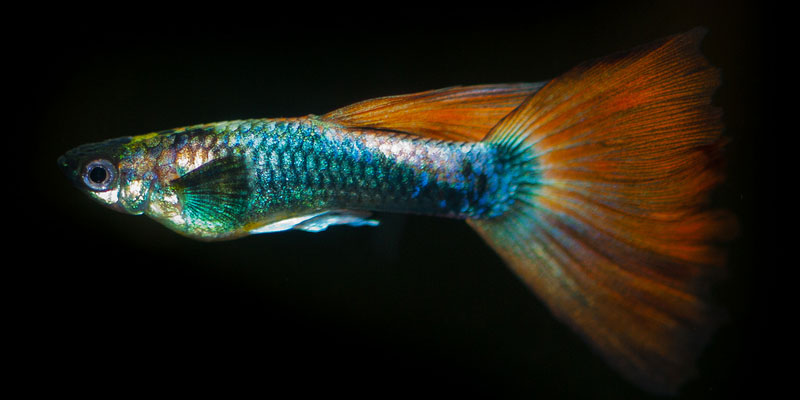
Guppies (Guppy Fish) Complete Guide: Breeding, Care, Behavior & Habitat
Guppies are native fish from South America from the Poeciliidae family and belong to the fresh waters. Poecilia wingei also known as Endler Guppyand are a part of the Poeciliidae family and they are closely related to the common Guppy which is the Poecilia reticulata. In this article we will focus on the Poecilia reticulate.
Contents
Guppies Overview
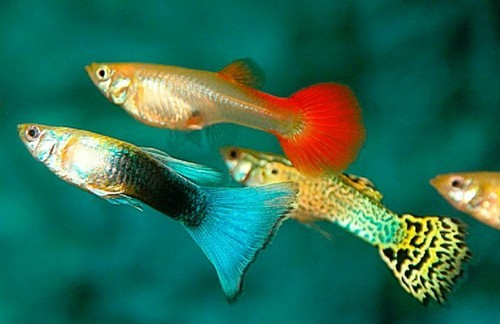
The guppies have a variety of 300. They are all in different colors, sizes, tail shape, shapes etc. They derive their name from Robert John Lechmere Guppy the one who found them in Trinidad in 1866 and back it was taken to the British Museum and there by an Ichthyologist was given the name Girardinus guppii. The fish has undergone a few changes in its name since then some to name include Lebistes reticulates and now known as the Poecilia reticulata. There are a few other common names that they are known by such as The Millions Fish only because of their high rate of breeding and also The Rainbow Fish since the variety is wide mainly in the colors they are available in.
In Asia to keep a control on the mosquito population they are used in the freshwaters. They have a beautiful color and are active by nature. Sometimes their qualities bring a negative impact and this has been experienced in the tank.
Behavior of the Guppies

Often found in groups, the guppies are found to be very peaceful. They are seen moving around nearly all the time and are extremely active swimmers. You are bound to notice that the male guppies try to woo the female guppies, enjoy chasing them and try to impress them by wiggling their fins. If your fish is stressed or ill you will see them hiding, it is their way to exhibit stress.
Appearance and Color of Guppy Fish

Guppies are seen in various colors and sizes, and their tails are shaped differently too. The female Guppy fish in the wild are grey and the males tend to have colorful stripes on its body, spots, splashes etc in several of colors. Due to breeders that are creating new strains there are so many varieties for an aquarium that have a brighter color and patterns on their body and their tail. Till today there are many additions in the varieties of guppies. Male’s guppies are smaller in size than the female’s guppies. The average is between 0.6-1.4 inches for males and whereas for females it is around 1.2-2.4 inches. The guppies are fish that are sexually dimorphic this means it is easy to distinguish the males and females from each other.
Guppies come in all colors rather even in those that you cannot imagine. That is how they are ‘Rainbow Fish’. The bottom of the guppies are bright and vibrant whereas the top is quite pale. Some are very metallic to look at. They have cells that don’t even have any color called the iridophores and tend to reflect some light which then creates an iridescent effect.
Pattern of the Guppies
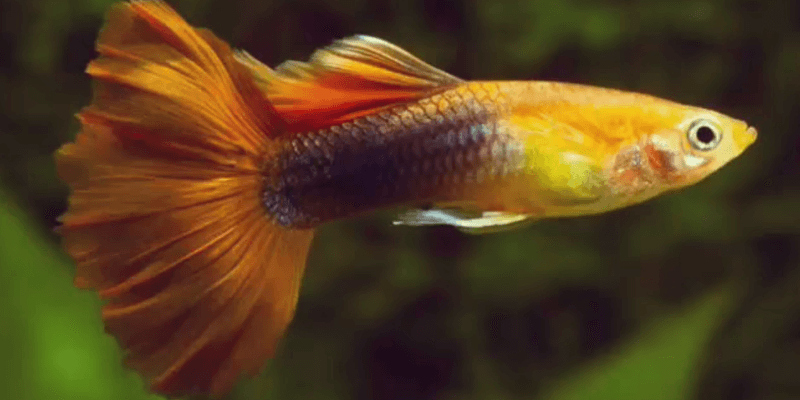
Some guppies are plain in color whereas Guppy fish are with a pattern. Following are some patterns commonly seen:
- The Cobra pattern: it is vertical barring and has rosettes.
- The Snakeskin pattern: looks like a chain-link pattern and has rosettes.
- The Tuxedo pattern: when the front and back half are in two different colors.
Having said that for the body we see that the tail too is either a solid color or is patterned. Some examples are:
- The Grass pattern: has few tiny dots giving it a grass look.
- The Lace pattern: a fine web-like pattern makes it look like it is covered in lace.
- The Leopard pattern: the spots on their body look like the leopard spots.
- The Mosaic pattern : the irregular spots connect to one another
Guppies: Shape of Tail
In their tail too you will notice a wide range of distinction:
There is a Fan shape, a Triangular shape, a Sword shape (double, top sword and bottom sword), a Flag shape a Spade shape, a Rounded shape, a Spear shape and then there is the Lyretails
Also, Check Out Swordtail Fish Care Guide.
Habitat and Tank Conditions

Try and keep the tank as natural as possible. They belong to warm freshwaters and to replicate those conditions it is necessary to know how the South America conditions are. Before setting up see to it that the bacteria is removed, the water is cycle and the water in the tank is warm for them to thrive in.
Select the ideal size of tank. Normally a 5 gallon should be sufficient but some prefer a 10 gallon. So compare and decide your preference. You will need a heater to keep the water warm and a thermometer to ensure the idea temperature to safeguard the fish’s lives. Although the idea ph for them is 7.0 – 7.2 they can also tolerate the ph levels from 5.5 – 5.8
Depending on the majority of the fish you will have to choose the type of filter for your tank. The set up of the fish will be largely affected by the kind you decide to keep (male / female), number of fish, type of fish, duration etc.
The tank should be decorated with plenty of live plants, rocks etc. Hornwort and Amazon Sword Plants especially for guppies are idea aquatic plants. Guppies are either seen in the middle or top of the tank majority of times.
Clean your tank weekly and partial water change say 25% is normally advised.
Read Out: How to Clean Fish Tank?
Guppy Fish Tank mates
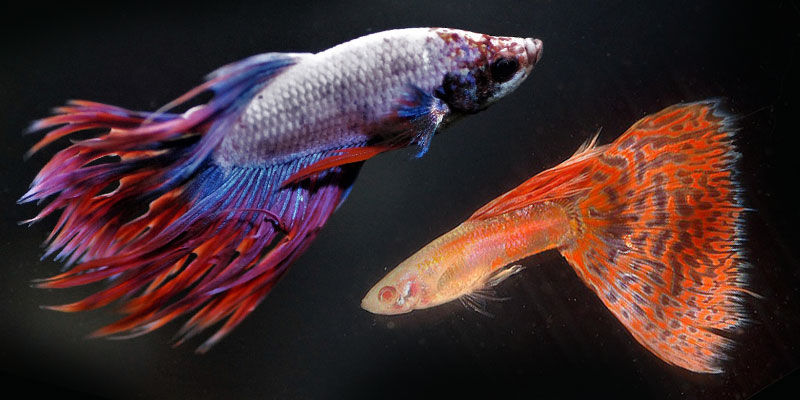
Guppies are not only the most common tank mates for guppies but also the best so far.
The males are vibrant in color and that is the main reason people like these fishes. The males are the best looking. One Guppy per 2 gallons of water is the idea ratio; so for an instance, you could keep 5 in a 10 gallon tank and 10 in a 20 gallon tank as per that ratio. If you keep both males and females, the ratio must be a ratio of 2:1.
Other peaceful community fish like Mollies, Platies, Gouramis, Corydoras and peaceful tetras are good mates for the guppies as well. The livebearers like ender’s livebearers and swordtails make an ideal tank mate for them guppies.
Large aggressive species should be kept far especially if there’s a chance that the guppies become their food. Red Tailed Sharks, Barbs and aggressive Tetras are a special no. these cannot be near the guppies at any cost. They tend to nip at the fins of their small mates. Ghost Shrimp or African Dwarf Frogs are some non fish animals that could be in the house with them.
Also, Check Out Silver Arowana Fish Care Guide
Food/Diet for Guppies
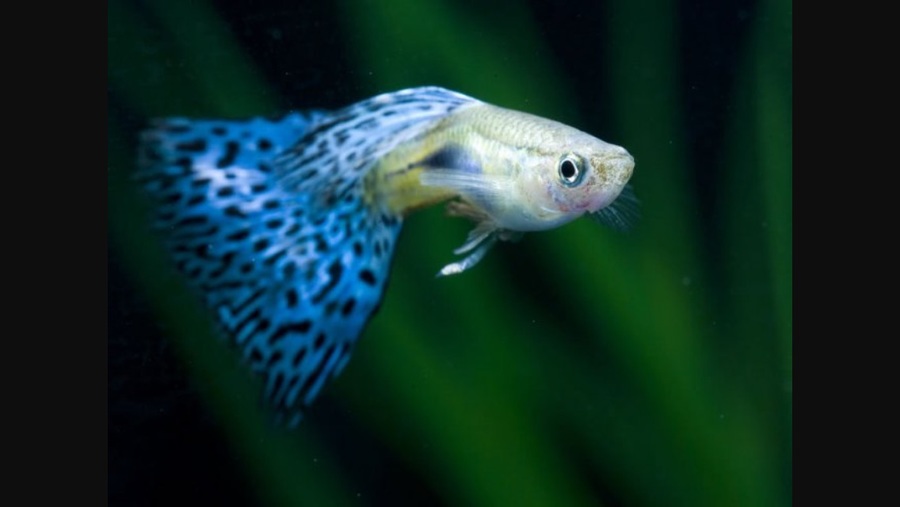
As long as their diet is concerned that is influenced by their natural habitat and environment. They are not fussy eaters and are omnivorous that means they eat animals as well as plants. Their diet should be largely constituted by fish flakes and ensure high protein. Fish flakes with wheat and soy should be avoided just like those with fillers should be. Use a feeder while feeding frozen bloodworms. One type of food will cause nutrient deficiency so make sure you feed them a variety in their diet. Over eating too could be a problem so adequate food is a must. No left overs or stale food. That could affect the water so clean and change water at equal intervals. Small and frequent food portions will help keep a balance. Feed them 4 – 5 times a day and they are good to go.
Having them is pleasing to the eye but taking care involves just as much of work and effort.
For Further Reading: Check Out Discus Fish Care Guide.
